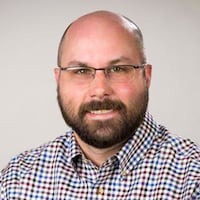But he eventually started playing tennis, and he continued when his family moved to Springboro about five years ago. Since, the 14-year-old who will be a freshman at Springboro High School in the fall has become one of the area’s notable youth tennis players while living the common summer lifestyle: Tennis, traveling and tournaments.
While out of school, these players spend dozens of hours each week practicing and playing the game to which they are committed. They try to rise in the United States Tennis Association rankings while preparing to win state high school titles and gain attention from college coaches.
Doing that requires time and development in organized activities like the Masters Program at South Regency Tennis Center operated by Dan Kronauge, the former Alter High School state champion, Ball State All-American and professional player. While area players once traveled to areas such as Cincinnati for coaching, the Miami Valley is now drawing some of southwestern Ohio’s top players to its programs.
As an individual sport, tennis also requires a commitment from the player’s family, both in rides for practice, traveling for weekend tournaments and equipment. Families often sacrifice summer vacations to participate in the traveling circuit that parents and instructors say can build self-esteem and competitiveness the players wouldn’t have without the sport.
That all means players like Berry, who is ranked No. 58 in the Midwest in the boys 14 age division, sacrifice for the game they feel can bring long-term benefit.
“I lose track easily,” Berry said of his travel schedule, which has included four tournaments since late May. “I take a lot of pride in my ranking, so I try to get as high as I can.”
Making choices
After attending Centerville High School for her freshman year, Lauren Smith and her family decided to enter her in home schooling for more flexibility in her tennis schedule.
The 16-year-old Smith has spent her summer like many players, splitting practice between the morning and the evening at several area clubs for an average of about 20 hours a week. But during the school year, she can open more time for tennis.
“I like it,” said Smith, who ranks No. 165 out of 671 players in the girls 16 Midwest division. “It frees up more time to be on the court, and I can do my homework in the evening.”
To be competitive, players have to make many choices, including their commitment to other sports, commitment to the high school team and how much to spend on equipment and lessons.
Berry, for instance, recently switched his strings so they wouldn’t brake as often, saving on re-stringing costs (which can rise quickly, depending on the frequency of play). Aundrea Busse, one of the area’s top incoming high school freshmen, needs new shoes every three weeks. Those items are part of a tennis equipment industry that last year cost participants about $242 million.
“I need grips, towels, extra clothes, extra socks, four rackets,” Smith said. “It’s all part of playing.”
Veteran moves
Busse and her mother have become experienced travelers during the years of summer tennis. They know the essentials: Chex Mix, audio books for the ride (mostly murder mysteries) and a self-made method for efficiently packing the car.
“We know how to handle it,” said Busse, who is ranked in the top 100 in the Midwest in both the girls 14 (76) and 16 (100) age divisions.
Parents and players said they learn quickly about the requirements to be a competitive youth player, including the USTA rankings system. At tournaments, players receive points for each match they win, and the points increase with the level of the match or tournament. Those points are tallied for the Midwest rankings. The higher the ranking, the more competitive tournaments a player can enter.
Some see the rankings as a negative in adding pressure for the young players. Others around tennis said the experience of the competitive environment helps the players in time management and simple life experiences.
“Looking back, I wouldn’t have done it any other way,” said Justin Kronauge, a Centerville product who was once ranked No. 1 nationally in his age group and recently completed an Ohio State career during which he went a combined 147-28 between singles and doubles. “You make sacrifices, but I traveled the country, saw new places, met friends from all over. I’m proud of what I did and the time I put into it, and it’s good to see that hard work pays off.”
About the Author
